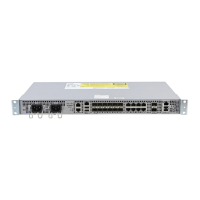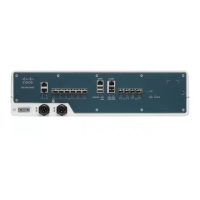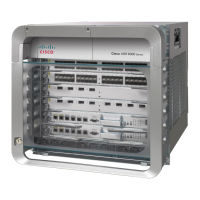SUMMARY STEPS
1.
enable
2.
configure terminal
3.
mpls traffic-eng tunnels
4.
ip multicast-routing [vrfvrf-name] [distributed]
5.
interface tunnel number
6.
tunnel mode mpls traffic-eng point-to-multipoint
7.
tunnel destination list mpls traffic-eng {identifierdest-list-id|namedest-list-name}
8.
ip igmp static-group {* | group-address [source{source-address| ssm-map}] | class-mapclass-map-name}
9.
ip pim {dense-mode [proxy-register {listaccess-list | route-mapmap-name}] | passive | sparse-mode|
sparse-dense-mode}
10.
exit
11.
mpls traffic-eng destination list {namedest-list-name | identifierdest-list-id}
12.
ip ip-address path-option id {dynamic | explicit {namename | identifierid}
13.
exit
14.
ip explicit-path {nameword| identifiernumber} [enable | disable]
15.
next-address [loose | strict] ip-address
16.
end
DETAILED STEPS
PurposeCommand or Action
Enables privileged EXEC mode.enable
Step 1
Example:
Router> enable
•
Enter your password if prompted.
Enters global configuration mode.configure terminal
Example:
Router# configure terminal
Step 2
Globally enables MPLS Traffic Engineering.mpls traffic-eng tunnels
Step 3
Example:
Router(config)# mpls traffic-eng tunnels
•
Also issue this command on each network interface
that supports a traffic engineering tunnel.
Globally enables IP multicast routing.
ip multicast-routing [vrfvrf-name] [distributed]
Example:
Step 4
MPLS Traffic Engineering Path Calculation and Setup Configuration Guide, Cisco IOS XE Release 3S (Cisco
ASR 920 Series)
22
MPLS Point-to-Multipoint Traffic Engineering
Configuring the Headend Routers

